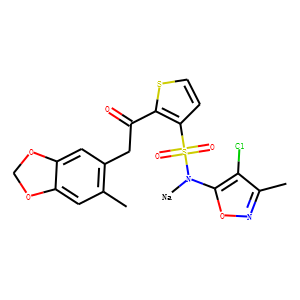| Reference | 1. Health Technol Assess. 2009 Oct;13(49):1-320. doi: 10.3310/hta13490.
<br>
Clinical and cost-effectiveness of epoprostenol, iloprost, bosentan, sitaxentan
and sildenafil for pulmonary arterial hypertension within their licensed
indications: a systematic review and economic evaluation.
<br>
Chen YF(1), Jowett S, Barton P, Malottki K, Hyde C, Gibbs JS, Pepke-Zaba J,
Fry-Smith A, Roberts J, Moore D.
<br>
Author information: <br>
(1)Public Health, Epidemiology & Biostatistics, School of Health & Population
Sciences, University of Birmingham, UK.
<br>
OBJECTIVE(S): To investigate the clinical and cost-effectiveness of epoprostenol,
iloprost, bosentan, sitaxentan and sildenafil for the treatment of adults with
pulmonary arterial hypertension (PAH) within their licensed indications.
DATA SOURCES: Major electronic databases (including the Cochrane Library, MEDLINE
and EMBASE) were searched up to February 2007. Further data were obtained from
dossiers submitted to NICE by the manufacturers of the technologies.
REVIEW METHODS: The systematic clinical and economic reviews were conducted
according to accepted procedures. Model-based economic evaluations of the
cost-effectiveness of the technologies from the perspective of the UK NHS and
personal social services were carried out.<br>
RESULTS: In total, 20 randomised controlled trials (RCTs) were included in this
assessment, mostly of 12-18 weeks duration and comparing one of the technologies
added to supportive treatment with supportive treatment alone. Four published
economic evaluations were identified. None produced results generalisable to the
NHS. There was no consensus in the industry submissions on the most appropriate
model structure for the technology assessment. Improvement in 6-minute walk
distance (6MWD) was seen with intravenous epoprostenol in primary pulmonary
hypertension (PPH) patients with mixed functional class (FC) (mainly III and IV,
licensed indication) compared with supportive care (58 metres; 95% CI 6-110). For
bosentan compared with supportive care, the pooled result for improvement in 6MWD
for FCIII patients with mixed PAH (licensed indication) was 59 metres (95% CI
20-99). For inhaled iloprost, sitaxentan and sildenafil no stratified data for
improvement in 6MWD were available. The odds ratio (OR) for FC deterioration at
12 weeks was 0.40 (95% CI 0.13-1.20) for intravenous epoprostenol compared with
supportive care. The corresponding values for inhaled iloprost (FCIII PPH
patients; licensed indication), bosentan, sitaxentan (FCIII patients with mixed
PAH; licensed indication) and sildenafil (FCIII patients with mixed PAH; licensed
indication) were 0.29 (95% CI 0.07-1.18), 0.21 (95% CI 0.03-1.76), 0.18 (95% CI
0.02-1.64) and [Commercial-in-confidence information has been removed]
respectively. The incremental cost-effectiveness ratios (ICERs) for the
technologies plus supportive care compared with supportive care alone, determined
by independent economic evaluation, were 277,000 pounds/quality-adjusted
life-year (QALY) for FCIII and 343,000 pounds/QALY for FCIV patients for
epoprostenol, 101,000 pounds/QALY for iloprost, 27,000 pounds/QALY for bosentan
and 25,000 pounds/QALY for sitaxentan. For the most part sildenafil plus
supportive care was more effective and less costly than supportive care alone and
therefore dominated supportive care. In the case of epoprostenol the ICERs were
sensitive to the price of epoprostenol and for bosentan and sitaxentan the ICERs
were sensitive to running the model over a shorter time horizon and with a lower
cost of epoprostenol. Two RCTs directly compared the technologies against each
other with no significant differences observed between the technologies.
Combinations of technologies were investigated in four RCTs, with some showing
conflicting results.<br>
CONCLUSION(S): All five technologies when added to supportive treatment and used
at licensed dose(s) were more effective than supportive treatment alone in RCTs
that included patients of mixed FC and types of PAH. Current evidence does not
allow adequate comparisons between the technologies nor for the use of
combinations of the technologies. Independent economic evaluation suggests that
bosentan, sitaxentan and sildenafil may be cost-effective by standard thresholds
and that iloprost and epoprostenol may not. If confirmed, the use of the most
cost-effective treatment would result in a reduction in costs for the NHS.
Long-term, double-blind RCTs of sufficient sample size that directly compare
bosentan, sitaxentan and sildenafil, and evaluate outcomes including survival,
quality of life, maintenance on treatment and impact on the use of resources for
NHS and personal social services are needed.
<br>
2. Drugs. 2007;67(5):761-70; discussion 771-2.
<br>
Sitaxentan: in pulmonary arterial hypertension.
<br>
Scott LJ(1).
<br>
Author information: <br>
(1)Wolters Kluwer Health/ Adis, Auckland, New Zealand. [email protected]
<br>
Sitaxentan is a highly selective endothelin (ET)(A) receptor antagonist, with an
approximately 6500 higher affinity for ET(A) than ET(B) receptors. In pulmonary
arterial hypertension (PAH), elevated ET-1 levels are strongly correlated with
disease severity and prognosis. Sitaxentan 100 mg once daily was efficacious in
the management of moderate to severe PAH in the pivotal, 12-18 week, large (n >
or = 98), well designed, placebo-controlled STRIDE-1, -2 and -4 trials. In the
STRIDE-1 and -2 trials (the majority of patients had New York Heart Association
[NYHA]/WHO functional class III PAH), sitaxentan-treated patients experienced
significantly greater improvements from baseline in distance walked over 6
minutes (6MWD; primary endpoint in STRIDE-2) and in NYHA/WHO functional class
than placebo recipients. In STRIDE-4, although there was no between-group
difference in terms of improvements in 6MWD in the primary analysis of patients
across all WHO functional classes (61% were functional class II) [primary
endpoint], improvements in 6MWD significantly favoured sitaxentan versus
placebo-treated patients in a post hoc subgroup analysis of those with WHO
functional class III or IV disease. The beneficial effects of sitaxentan therapy
on exercise capacity and NYHA/WHO functional class were maintained after up to 2
years/’ treatment. Treatment with sitaxentan for up to 2 years was generally well
tolerated in clinical trials.
|

